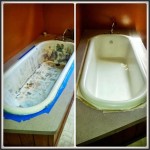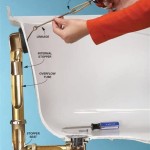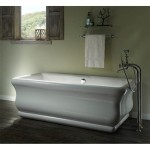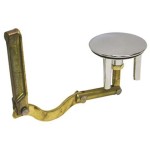Bathtub Will Not Drain: Essential Troubleshooting Guide
A bathtub that refuses to drain can be a frustrating and unpleasant experience. If you find yourself in this situation, don't worry. This guide will provide you with the essential troubleshooting steps to help you get your bathtub draining properly again.
Step 1: Check the Drain Stopper
The most common reason for a bathtub not draining is a clogged drain stopper. Hair, soap scum, and other debris can accumulate over time, creating a blockage that prevents water from flowing out. Begin by removing the drain stopper and cleaning it thoroughly. Use a drain snake or a pair of pliers to remove any visible debris.
Step 2: Inspect the Drain Hole
Once the drain stopper is clean, inspect the drain hole itself. Look for any hair, soap scum, or other debris that may be blocking the water flow. You can use a flashlight to illuminate the drain hole and a small tool to remove any visible obstructions.
Step 3: Clear the Overflow Hole
In addition to the main drain hole, bathtubs also have an overflow hole. This hole is located near the top of the bathtub and is designed to prevent water from overflowing. However, hair and soap scum can clog the overflow hole, causing the bathtub to drain slowly or not at all. Use a small tool to remove any debris from the overflow hole.
Step 4: Unclog the Drainpipe
If the drain stopper, drain hole, and overflow hole are all clear, the problem may be in the drainpipe. You can try unclogging the drainpipe by pouring a solution of baking soda and vinegar into the drain. Let the solution sit for 30 minutes, then flush the drain with hot water. If this doesn't work, you may need to use a drain snake to remove the clog.
Step 5: Check for a Broken Drainpipe
In rare cases, a broken drainpipe may be causing the bathtub to not drain. If you suspect a broken drainpipe, it is recommended to call a professional plumber to inspect and repair the issue.
Conclusion
By following these troubleshooting steps, you should be able to resolve the issue of your bathtub not draining. However, if you are unable to clear the clog or suspect a more serious problem, do not hesitate to contact a qualified plumber for assistance.
Bathtub Has Been Extremely Slow Draining Clogged For What Seems Like Years And All Methods We Ve Tried To Fix Draino Snakes Etc Are Inconsistent Any Permanent Solutions Quora

How To Unclog A Shower Drain Without Chemicals Diy Family Handyman

Top 5 Tips On How To Unclog A Bathtub Drain Smiley Cleaning

How To Unclog A Bathtub Drain Without Toxic Chemicals

How To Replace Bathtub Drain Stopper With A Lift And Turn Diy

How To Unclog A Bathroom Drain

One Simple Trick To Unclog Your Tub Drain The Creek Line House

How To Unclog A Bathtub Drain Homeserve Usa

How To Easily Unclog Bathtub Shower Drain In 5 Minutes Jonny Diy

4 Ways To Clean A Bathtub Drain Wikihow








